
Want a better idea of what you can expect throughout a pregnancy? Here’s some information on each week in your pregnancy. We would be happy to meet with you to explain further!
Call us today or schedule an appointment to access our free medical and support services.
Week 1-2
At weeks 1 & 2, you’re actually not pregnant yet! This is because most practitioners measure the length of your pregnancy from the first day of your last menstrual period (LMP). In the first two weeks of pregnancy, your body is preparing for ovulation (the release of an unfertilized egg) and fertilization (when the sperm meets the egg).
First Trimester | Weeks 3-14
Week 3 | You’ve conceived! Fertilization or conception happens when a single sperm cell meets the egg. At this point, the details of your little one (like hair color, gender etc.) have already been determined! Throughout week 3, your little embryo is making it’s way to the uterine lining and will implant itself there to grow for the next nine months.

Week 4 | By week 4, the embryo has implanted in the lining of your uterus! Most women aren’t experiencing early pregnancy symptoms at this point, but there’s a chance you could. You could take a pregnancy test now, but there is a chance it may not be reliable yet. Your embryo is experiencing major growth, as the foundation is laid for the development of your baby’s digestive system, liver, lungs, heart, kidneys, sex organs, nervous system, eyes and more.
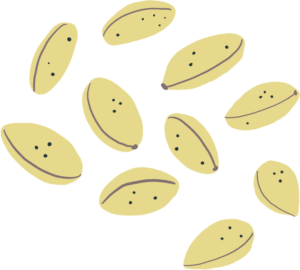
Week 5 | By week 5, you’re officially in month two of your pregnancy and you can officially take a pregnancy test. You might begin to experience early pregnancy symptoms like fatigue and nausea. In week 5, the embryo looks a little bit like a tadpole and is the size of an orange seed. The neural system and circulatory system are quickly forming, and you might be able see a heartbeat on an ultrasound by the end of this week, though generally it’s more visible in week 6 or 7.
It’s a good time to call Agape and set up an appointment with us! Women ovulate at different times, and a medical grade pregnancy test paired with a limited obstetric ultrasound can help you gather a lot of information on your baby.

Week 6 | By week 6, it’s likely that you’re feeling pregnant, experiencing some of those early pregnancy symptoms. At week 6, your baby is leaving the tadpole form behind and is looking, well, much more like a baby! His or her heart is beating and the kidneys, liver, and lungs are starting to take shape. Your baby is about the size of a pea.

Week 7 | In week 7, your baby is about the size of a blueberry! Get this: new brain cells are being generated at the rate of 100 per minute. Your baby’s kidneys are in place and their mouth and tongue are developing. Arms and legs are lengthening and gaining strength. By week 7, you’ll almost certainly be experiencing tell-tale signs of pregnancy, like nausea or swollen/tender breasts.
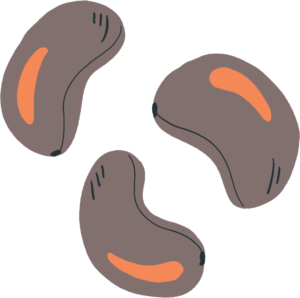
Week 8 | By the end of week 8, every single essential organ and body system has started to develop! Facial features like lips, nose, and eyelids are developing and tiny fingers and toes are starting to differentiate. The baby’s heartrate is an impressive 150-170 beats per minute, and his or her little limbs and body are starting to move independently. Your baby is about the size of a raspberry.
Make sure you’ve begun prenatal care! For more information on finding and establishing good prenatal care, click here.

Week 9 | Congratulations, you made it to month three of your pregnancy! Your fetus is the size of a green olive. Though your little one is moving its arms and legs spontaneously quite a bit, you won’t start feeling it for at least another month or two. Chances are good you’re feeling pretty tired by now – growing a baby and also a placenta (the organ that will be your baby’s lifeline) is hard work!

Week 10 | Your baby is growing quickly in week 10, now roughly 1.5 inches long, or the size of a prune. Bones and cartilage are forming, and little arms with tiny elbows are already able to flex. That’s not all! The stomach is producing digestive juices, the kidneys are making more urine, and males are already producing testosterone. At 10 weeks, you might be starting to show just a little; your uterus is now a bit larger than a grapefruit. Don’t worry if you don’t see a bump yet, it’ll come soon.
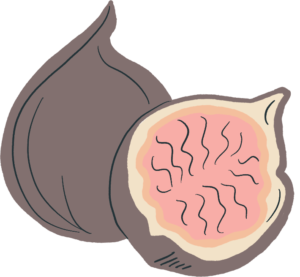
Week 11 | Your baby is now the size of a large strawberry! Hair follicles are forming all over and tiny fingers and toes complement little hands and feet. You won’t be able to tell the sex of your baby yet, but if it’s a girl, her ovaries are now developing.

Week 12 | At twelve weeks, the enormous task of building all the body’s systems from scratch is almost completed, as all of the systems are fully formed. From here on out, the organs and systems will grow and begin to function, all while in the safe haven of your womb. As you near the end of your first trimester, your uterus will likely shift from the bottom of your pelvis to the front of your abdomen. This usually signals the end of many of those early pesky symptoms, like nausea, frequent need to urinate, tender breasts, and fatigue. Heads up, you might be seeing some of those again towards the end of your pregnancy! Can you believe your baby is fully formed, already the size of a lime?

Week 13 | In the last week of the first trimester, your baby grows to the size of a lemon. Vocal chords are starting to develop as intestines move from the umbilical cord to their permanent home in the baby’s abdomen. Around this time, babies might be able to get their thumbs into their mouths, a habit that often sticks with children for quite a few years.

Week 14 | Welcome to the second trimester, the trimester that has the reputation for being the easiest and most comfortable! As you’re well into month four of your pregnancy, the baby is about the size of a navel orange. Your baby can use facial muscles to make all kinds of expressions! Though usually not yet detectable on an ultrasound, fully formed genitals make their entrance, which means you can soon know the gender of your little one!
Second Trimester | Weeks 15-27
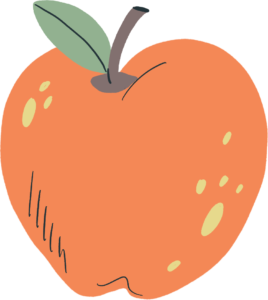
Week 15 | In week 15, your baby is the size of a pear and occupied with practicing all sorts of things like breathing, sucking, swallowing and moving arms and legs in more graceful movements. By week 15, your baby’s skeleton would show up on an x-ray, if one were taken. Remember to keep up that prenatal care!

Week 16 | You’re four months pregnant! Your avocado-sized baby has working eyes that are moving side to side and perceiving light, though their eyelids remain closed. By now, you’re probably showing pretty clearly and needing to make the switch to maternity clothes if you haven’t yet.

Week 17 | In week 17, your baby is developing one of a kind fingerprints. Their ears are also almost fully developed, meaning they’ll be hearing you soon! Your baby is now the size of a large onion and weighs about 5 oz. The baby’s heartbeat is now regulated by the brain so no more irregular beats. That little heart is still pumping at about double the pace of your own.
It’s a good time to call Agape and set up an appointment with us! Women ovulate at different times, and a medical grade pregnancy test paired with a limited obstetric ultrasound can help you gather a lot of information on your baby.

Week 18 | By week 18, your baby has mastered two new skills: yawning and hiccupping. In the next couple of weeks, you may start to feel those hiccups as well as other movements from your little one, now that they’re getting bigger and stronger. Around this time, your baby’s genitals will be defined; for females, the fallopian tubes and the uterus will be in place. For males, you might just be able to catch a glimpse of genitals in your next ultrasound.
Now is a good time to think about signing up for a birthing class, to help prepare you for labor and delivery. Agape offers a free 6-week course to equip parents for the best birth experience possible. Click here to learn more.

Week 19 | Feeling those kicks? If you haven’t yet, in the coming weeks you should be able to feel the baby kick and stretch inside. At first it may just feel like butterflies or even gas, but soon you’ll be able to differentiate. Growing strong, your baby weighs in at about half a pound. During week 19, the main airways develop in the lungs.

Week 20 | You’re just over halfway through your pregnancy! You should be having your anatomy scan pretty soon, which, you guessed it, means you’ll get to know the gender of your baby. This will also give you the opportunity to make sure baby is healthy and growing on schedule. About the size of a sweet potato, your babe is growing strong but still has plenty of room to kick, flip, and stretch.

Week 21 | In week 21, your baby is the size of a large banana. You may be shocked that your little one grew so much in one week, but you should know that doctors change how they measure developing babies after week 20. They were measuring crown-to-rump, but now they measure crown-to-heel. Your baby now has more control over his or her movements and is also making use of newly formed taste buds! You may notice that your little one is leaving their mark on you in the form of stretch marks, as your body works to accommodate its growing guest.

Week 22 | This week usually marks a big milestone: your baby weighs one pound! In addition, he or she is about 11 inches long. Your baby is developing a stronger grip, eyesight that can distinguish light and dark, and ears strong enough to pick up on some sounds from inside your body – like your heart beat and digestion!

Week 23 | Week 23 means you’re revving up for a big growth spurt, in fact, your baby will likely double in size over the next month. The placenta – that other thing you’ve been growing the last few months, also known as your baby’s life support – is now fully formed and is ensuring your baby gets important nutrients and oxygen while also working to remove waste products.
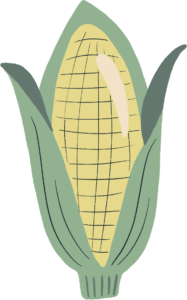
Week 24 | 24 weeks means you’re 6 months into your pregnancy! If you could see your baby’s face right now, you’d have a pretty good idea of what that cute little one will look like by delivery. Facial features, though small and not yet supported by healthy fat, are almost fully formed at this point! Skin is still loose and translucent, though this will change soon as your little one starts to plump up. Twenty four weeks is generally considered the age of viability, the age when a baby is able survive outside the womb.

Week 25 | Your baby will be about the size of an eggplant, while your uterus has stretched to the size of a soccer ball by week 25! The startle reflex is starting to kick-in at about this time. Lungs are still developing, and not yet ready to breathe air on their own.
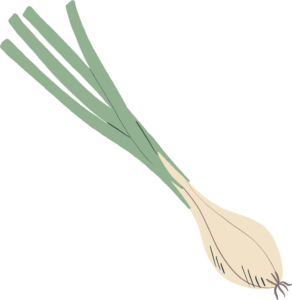
Week 26 | Can you believe your baby is measuring over 14 inches long and weighs around 2 pounds? This week or very soon, your baby’s eyes will start to open. This means that they can see, even if there’s not much in your uterus to look at. In addition to sight, we are starting to see brain waves in your baby. This is evidenced by a response to things they hear, like a faster heartbeat after a sudden sound.

Week 27 | By week 27, your baby may be able to recognize your voice and your partners – though everything they’re hearing is muffled by the fluid and flesh in between. To flip it around, your partner may be able to hear your baby’s heartbeat through your stomach! Unbelievable as it sounds, your uterus is about the size of a basketball by week 27.
Third Trimester | Weeks 28-40

Week 28 | In week 28, you make it to the third and final trimester of your pregnancy. Your baby has been making facial expressions for quite some time now, but around this time it’s common for them to add something new to their repertoire: sticking out their tongue. Your baby is about the size of a head of lettuce!
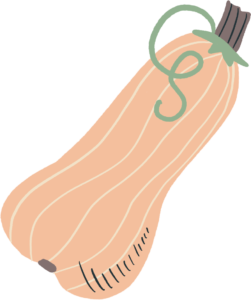
Week 29 | By week 29, your little one is measuring close to 16 inches and weighing 2.5 to 3 pounds. This is close to their length at birth; however, they’ve got some serious weight gain to go before they make their appearance. Your doctor very likely will want you to spend some time each day counting kicks, as you’re probably feeling all kinds of nudges from heels, elbows, hands and feet alike.
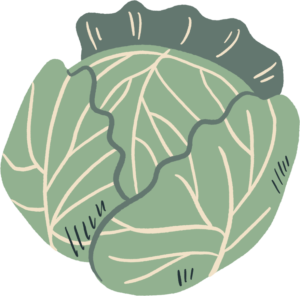
Week 30 | From here on out, your baby will be packing on the weight each week as he or she nears birth. Now weighing about 3 pounds, your little one will probably add about a half of a pound every week for the next 7 or so weeks – a change you’ll be able to track as your belly grows. This week your baby’s brain is developing the characteristic wrinkles, allowing it more space for important brain tissue. Unfortunately, you may be welcoming back some of those early pregnancy symptoms that had previously faded away. Your babies head will likely be pressing on your bladder, causing a frequent need for urination. In addition, you might have sore breasts, fatigue, and heartburn.

Week 31 | Your baby is likely sleeping more now, meaning you might be noticing more pronounced rhythms of wakefulness, movement, and rest. Your baby’s brain is developing faster than ever, now processing information from all five senses.

Week 32 | In week 32, your baby is the size of a cantaloupe! All of your baby’s major organs are fully developed now, except for the lungs. This means, even if you gave birth now, your little one would probably be just fine. Your baby is working hard to develop those lungs, practicing by breathing in amniotic fluid every day.

Week 33 | In week 33, your baby has likely reached the length he or she will measure at birth, around 17 inches. Weighing in around 4.25 pounds, they still have some weight to pack on. However, by this point, your little one has added enough chub that their skin is no longer translucent but is opaque, much like you would expect it to be. Around now, your baby has developed his or her own immune system – a huge step for living independently.

Week 34 | By week 34, you might be feeling exhausted and even experiencing what are called Braxton Hicks contractions, or practice contractions of your uterus. They might feel like the real thing, but they’re quite different. Baby is gaining weight and can now differentiate between day and night!

Week 35 | Yes, even as you make your way through month 8, your uterus is still expanding to accommodate for your growing baby, who is now about the size of a pineapple. Your baby is around 5 pounds, and still somewhere near 17 or 18 inches long. Be sure to take care of yourself as you get closer to delivery – your body is working hard!

Week 36 | Welcome to month 9 of pregnancy! Growth from here on out is mostly adding important fat. Your baby should be in position, with their head down toward your cervix. Their little skull bones are still not fused together, so that their head can more easily maneuver through the birth canal. By this time, movements have mostly changed from kicks and flips to rolls, jabs, or little squirms, as baby has less space to move around.

Week 37 | At this age, the average fetus weighs 6 pounds, though boys generally weigh a little more than girls. You may want to take this week to make sure everything is ready for the delivery of your bundle of joy. You’re technically still early term, but you’re oh so close! The next two weeks will give the brain and lungs time to fully mature for life outside the womb.

Week 38 | In week 38, baby continues to add fat and fine tune his or her nervous system, preparing to face the world. Your little one is not so little anymore, as babies on average weigh about 7 pounds in week 38.

Week 39 | Now that you’ve reached week 39, your baby is officially considered full term! Your baby has probably reached (or is very close to) his or her birth weight, though their brain continues to develop rapidly. Be watching for signs of labor as you wait on your baby to make their appearance.

Week 40 | Prepare to meet and snuggle your baby any day now! Though don’t be discouraged if it takes a little longer, 1 in 3 pregnancies hit the 41 week mark.
The information in these sections were collected and adapted from Pregnancy Week-by-Week: Baby Development, Symptoms & Signs (whattoexpect.com). Visit their website for a more in-depth tour through pregnancy. If you’d like support during or after a pregnancy, take a look at our support services or give us a call to find out how we can help!
